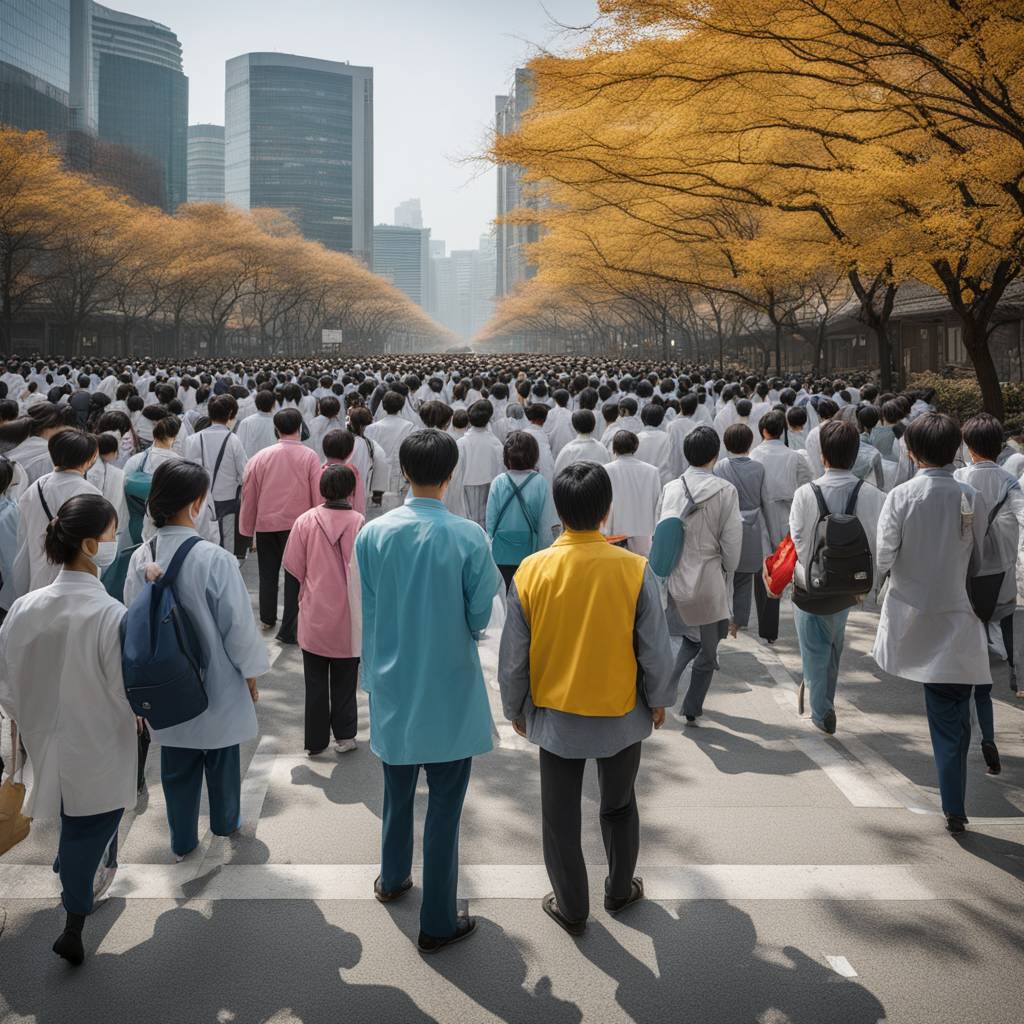In South Korea, frustration is rising six weeks after thousands of residents and interns at hospitals walked off the job. Patients have filed complaints about surgeries and treatments being postponed or canceled, leading to wards closing and staff restructuring. Nurses are taking on tasks usually done by physicians, and military doctors have been deployed to public health centers. President Yoon Suk Yeol’s proposal to increase medical school admissions to address a shortage of physicians has sparked controversy. Critics accuse doctors of trying to maintain their elite status and income by keeping the number of doctors low.
With only 2.6 doctors per 1,000 people, South Korea has fewer physicians per capita than most developed countries. Surveys show that most South Koreans want more medical students enrolled to address this shortage. The public is divided on the walkout of the 12,000 physicians. While doctors are highly respected, some believe they are protecting their own interests. Despite having prestige, doctors face criticism for their perceived elitism and resistance to change. The public expects them to compromise on public policies and social issues.
Doctors are highly respected in South Korea, where many top students choose medicine for its social status and financial stability. Patients have access to government-subsidized healthcare, leading to a star system where renowned doctors attract large numbers of patients. Young trainee doctors, however, work grueling shifts for low wages and face criticism for opposing an increase in medical school admissions. Some view this as prioritizing financial gain over patient care. The government’s proposed increase in admissions is seen as a rushed attempt to win votes in legislative elections.
Amid the dispute, patients are facing delays in treatments, surgeries, and follow-up visits. While some blame the government for the political standoff, others believe medical school admissions should be increased gradually. President Yoon aims to raise admissions to 5,000 students annually from around 3,000, along with a significant investment in healthcare services. Critics argue that the plan is focused on winning votes and may not effectively address the physician shortage, particularly in areas like emergency care. Civic groups are urging both doctors and the government to end the dispute before patient care is compromised.
President Yoon defended his proposal in a televised speech, stating that 2,000 more medical students per year are the minimum required. He invited doctors to submit a counterproposal and offered to meet with them. A major doctors’ group welcomed the offer but emphasized the need for meaningful dialogue. Regardless of the outcome, the attitude towards the medical profession in South Korea is unlikely to change. Despite the current anger towards doctors, the public still holds the profession in high regard and continues to aspire for their children to become doctors.








